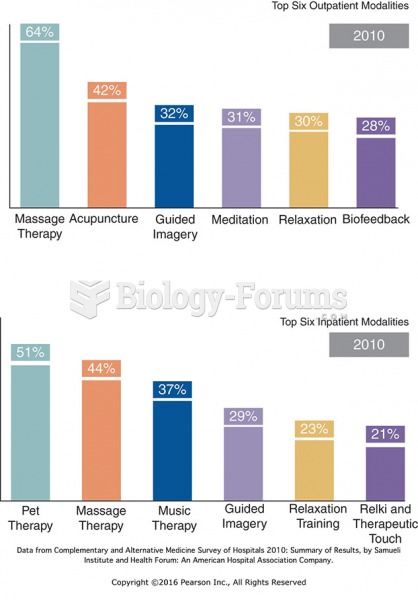Answer to Question 1
Correct Answer: 3, 4
Rationale 1: There is no reason for intravenous fluids to not be paid.
Rationale 2: There is no reason for x-rays to not be paid.
Rationale 3: In efforts to decrease cost and encourage attention to preventable conditions, for discharges occurring after October 1, 2008, hospitals no longer receive additional payment for cases in which one of several identified preventable conditions was not present on admission. That is, the case would be paid as though the secondary diagnosis were not present. Examples of hospital-acquired conditions (HACs) are pressure ulcers and urinary tract infections following catheterization.
Rationale 4: In efforts to decrease cost and encourage attention to preventable conditions, for discharges occurring after October 1, 2008, hospitals no longer receive additional payment for cases in which one of several identified preventable conditions was not present on admission. That is, the case would be paid as though the secondary diagnosis were not present. Examples of hospital-acquired conditions (HACs) are pressure ulcers and urinary tract infections following catheterization.
Rationale 5: There is no reason for physical therapy treatments to not be paid.
Answer to Question 2
Correct Answer: 3, 4, 5
Rationale 1: Ventilatory support would be considered a critical illness and most likely not provided through home care.
Rationale 2: A health and wellness visit can be conducted in a community clinic or health care provider's office. Home care would not be needed.
Rationale 3: Home health care nurses and other staff offer education to clients and families and also provide comprehensive care to clients who are acutely, chronically, or terminally ill. This would include teaching about surgical wound care.
Rationale 4: Home health care nurses and other staff offer education to clients and families and also provide comprehensive care to clients who are acutely, chronically, or terminally ill. This would include providing intravenous antibiotics daily.
Rationale 5: Home health care nurses and other staff offer education to clients and families and also provide comprehensive care to clients who are acutely, chronically, or terminally ill. This would include teaching about self-management of a disease process.







